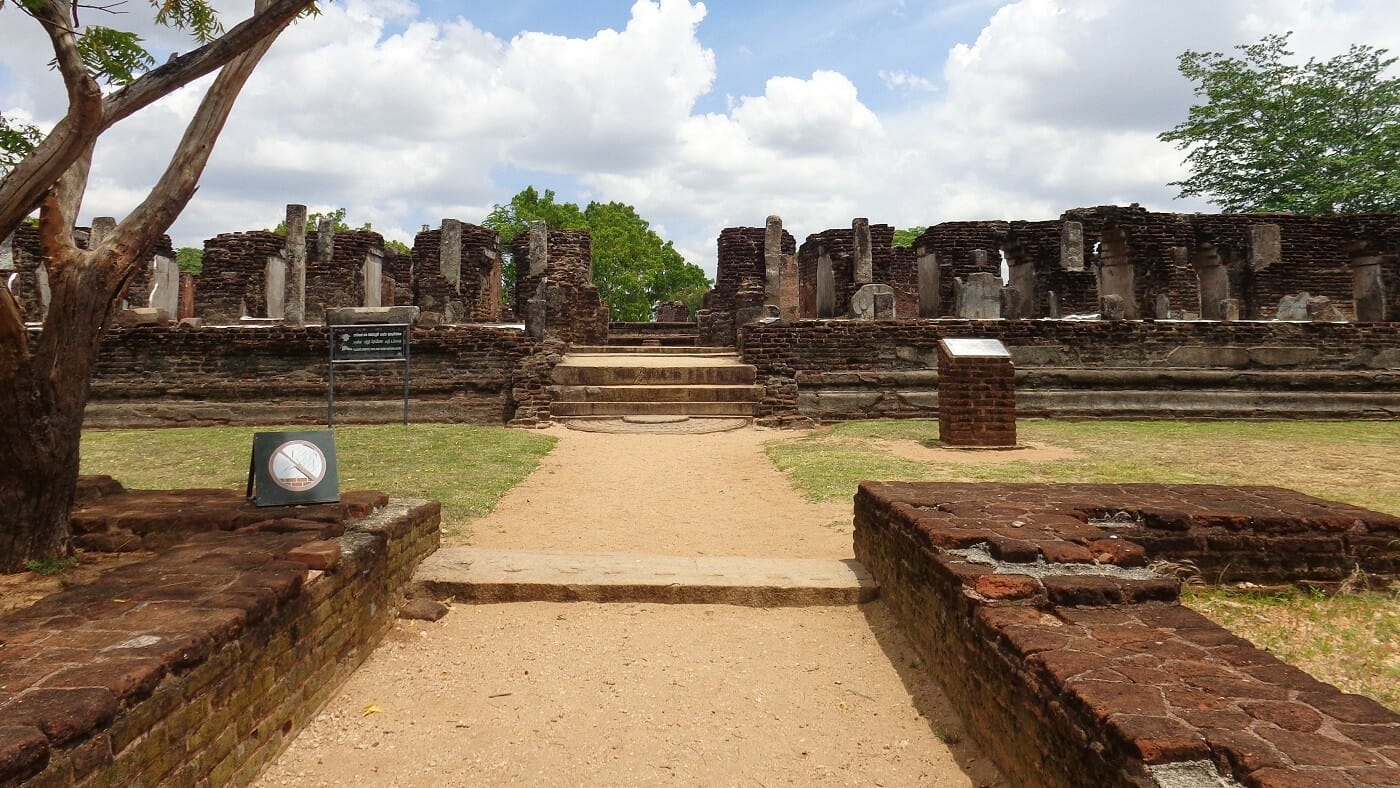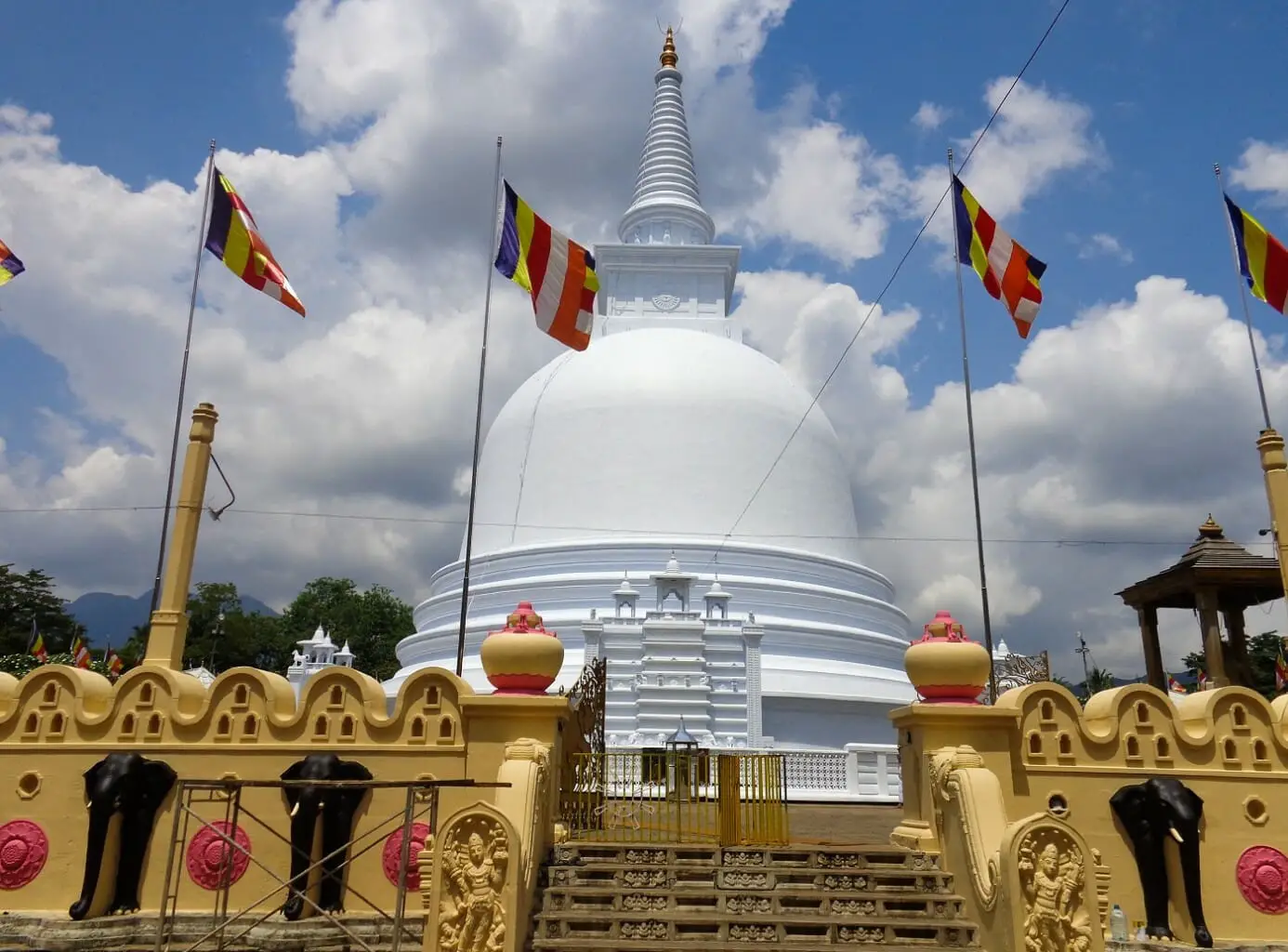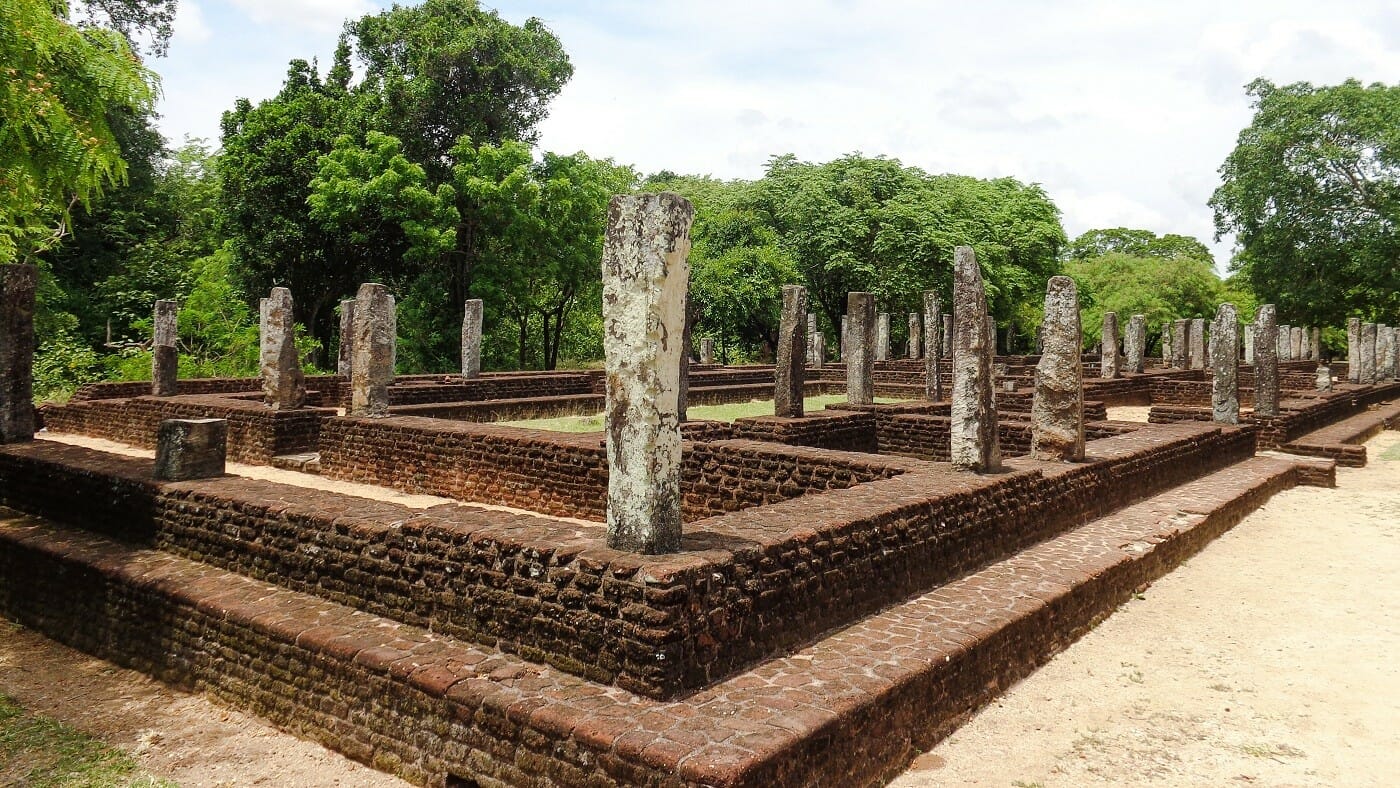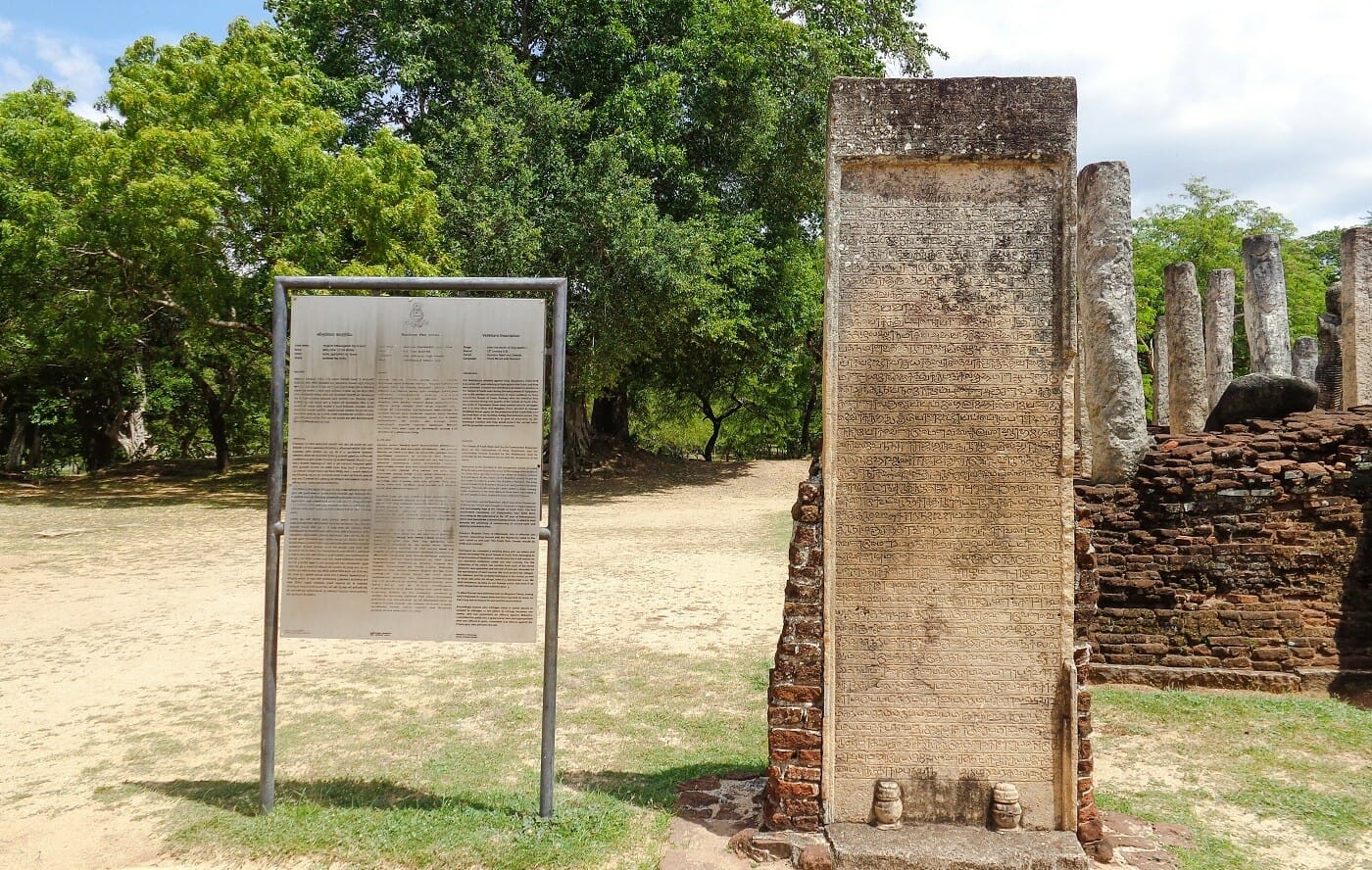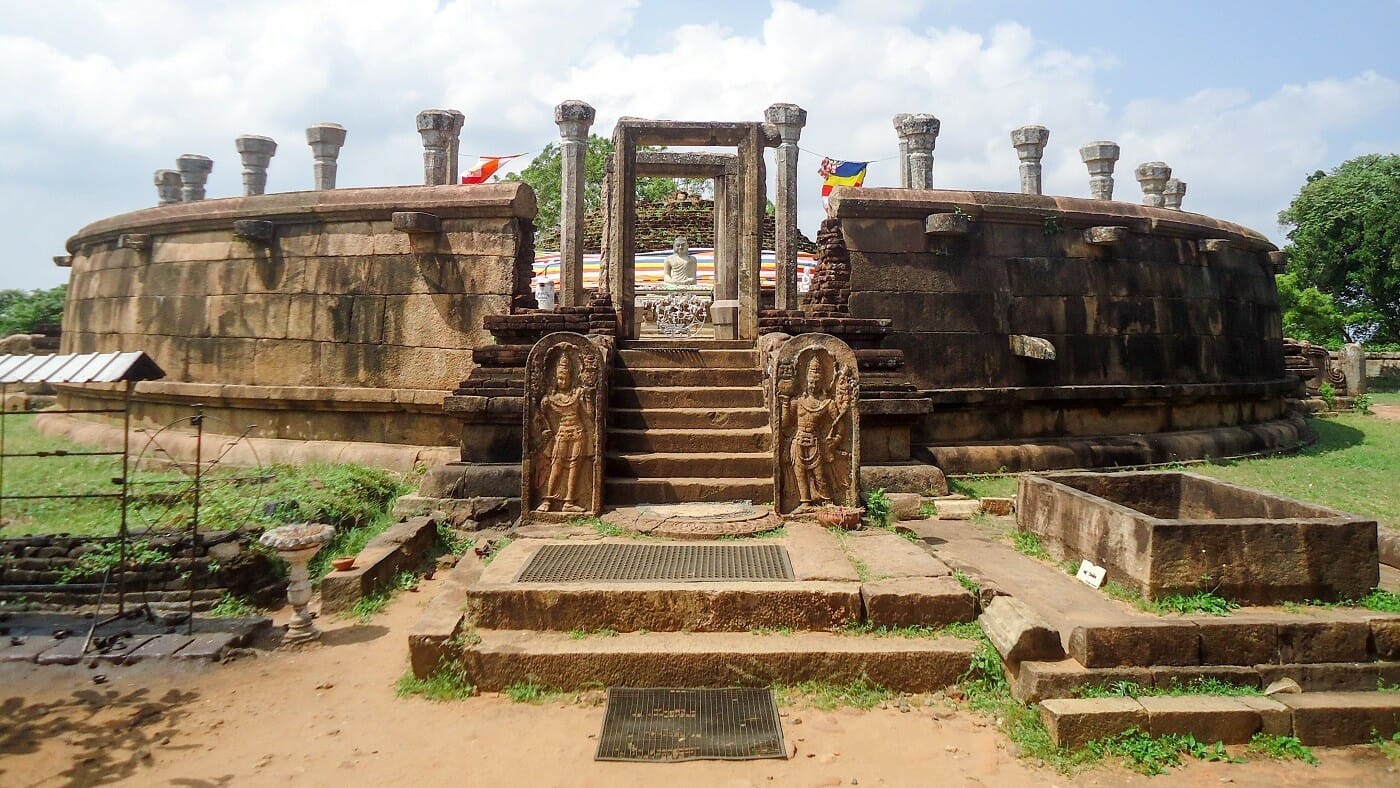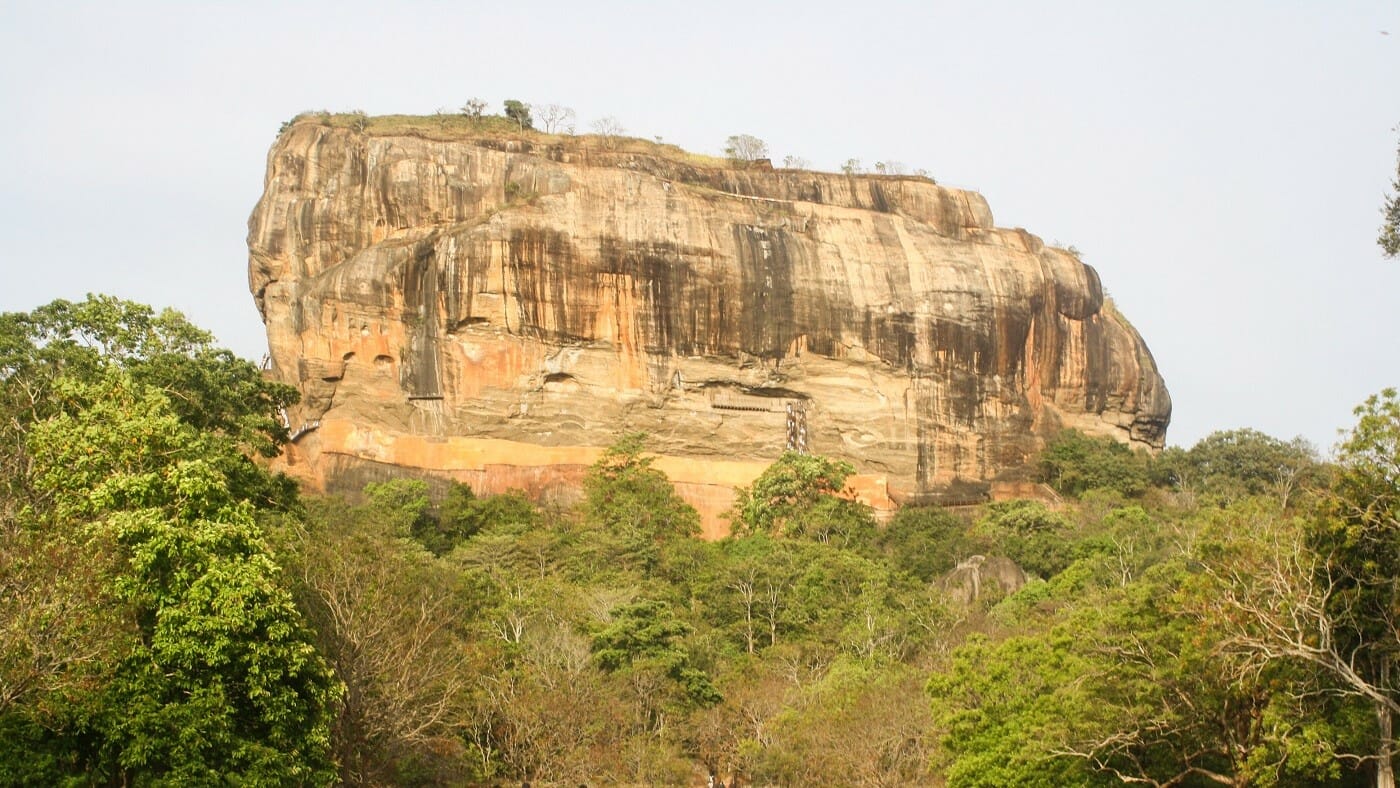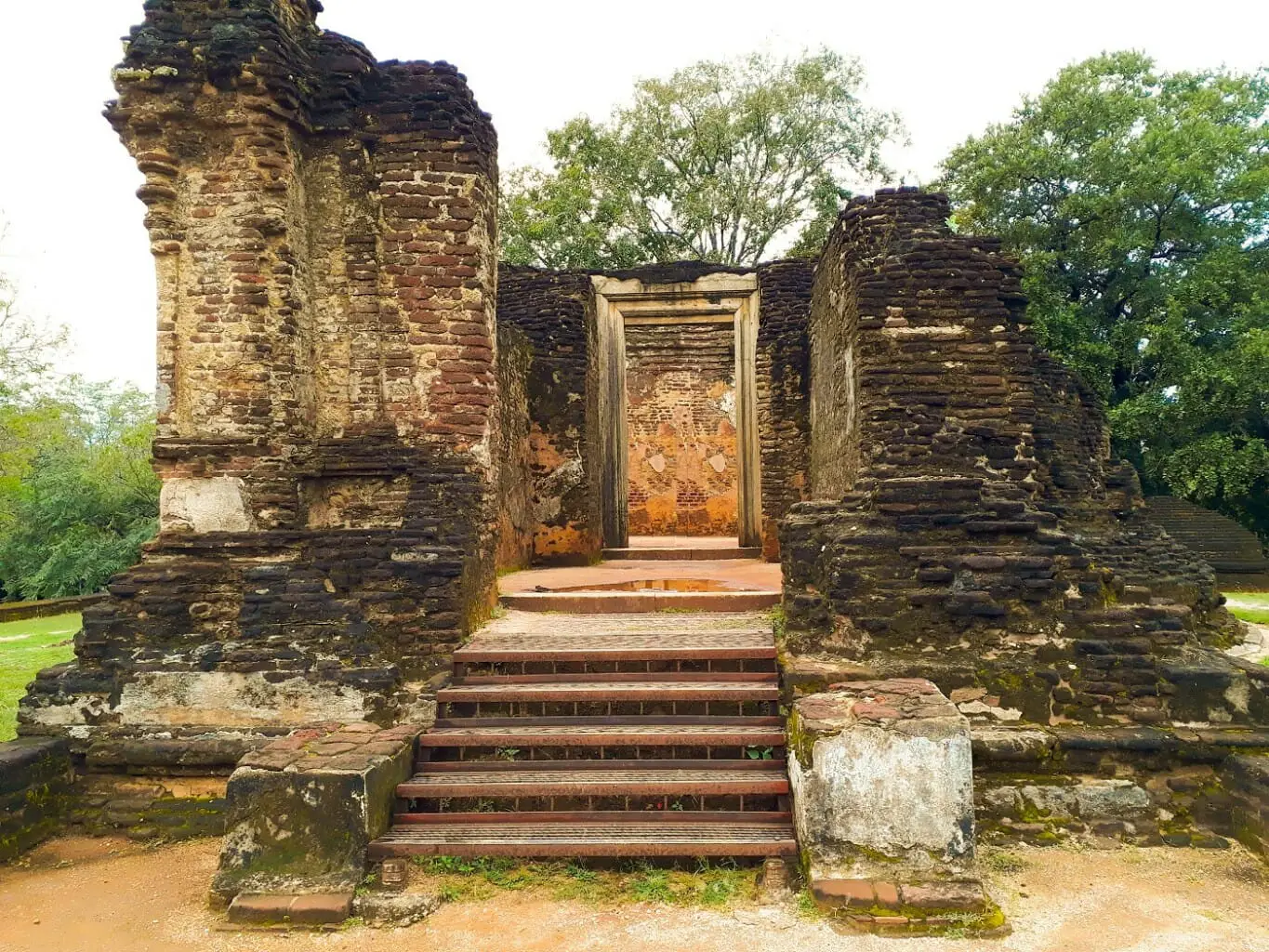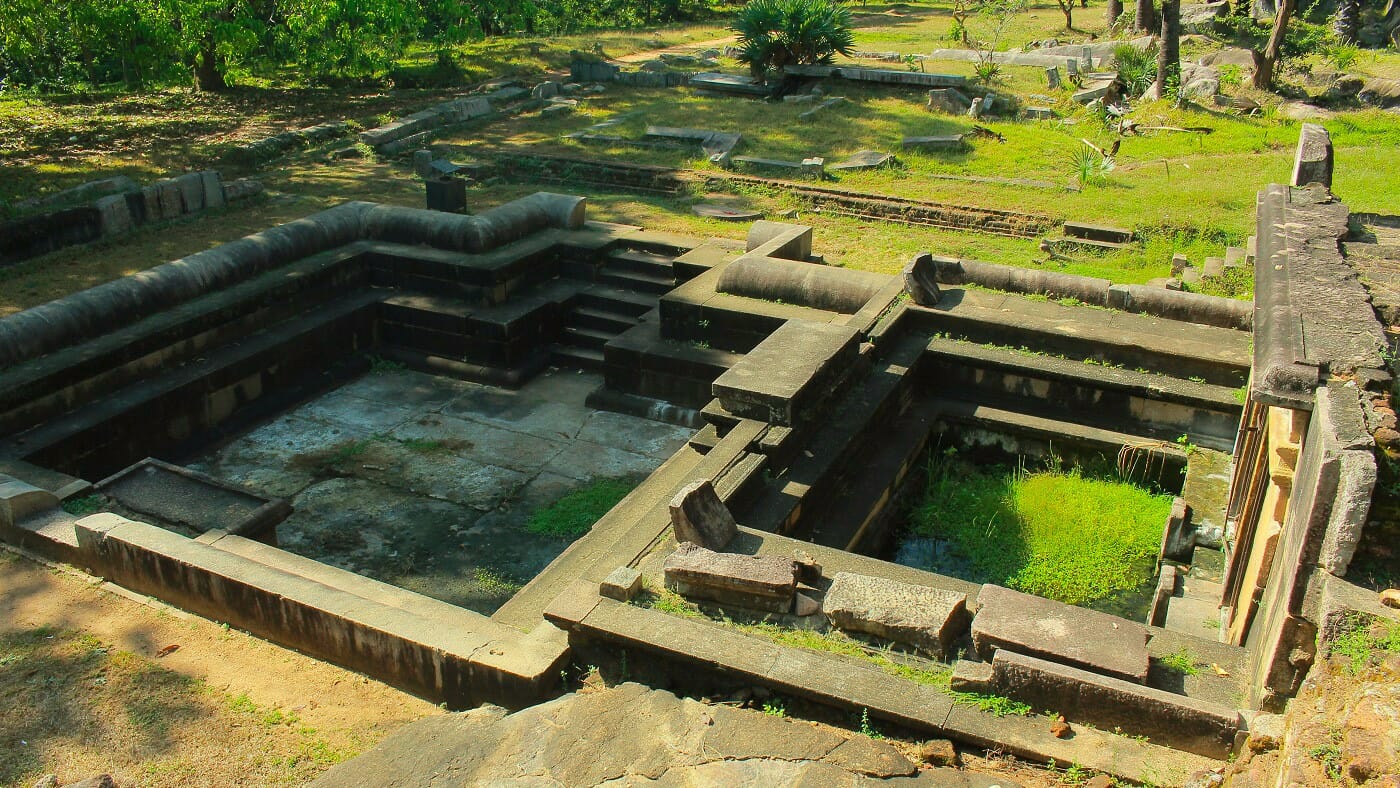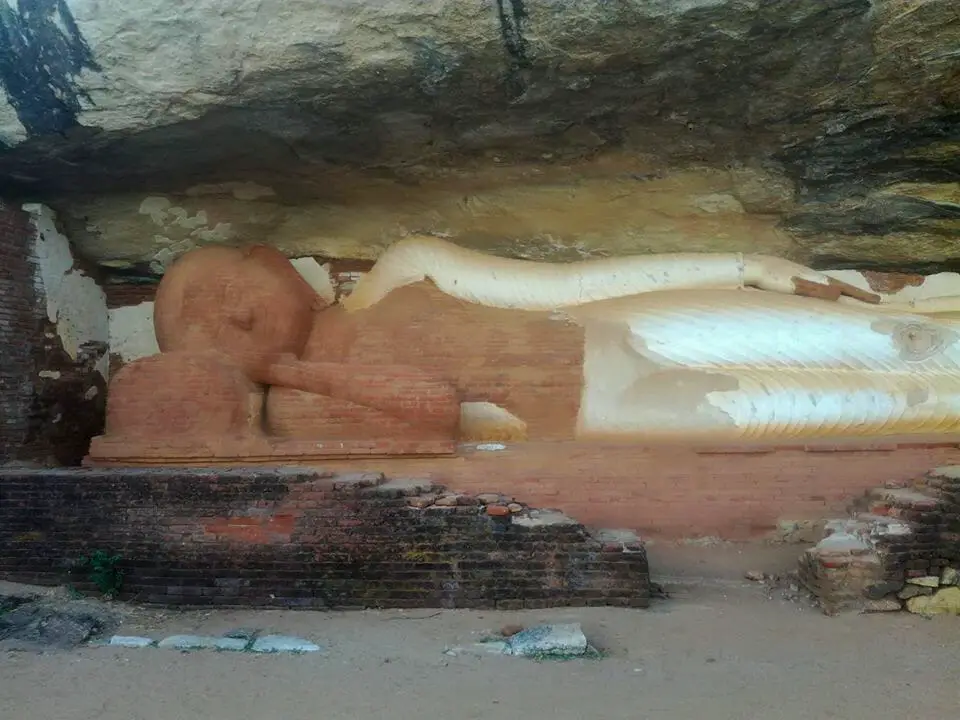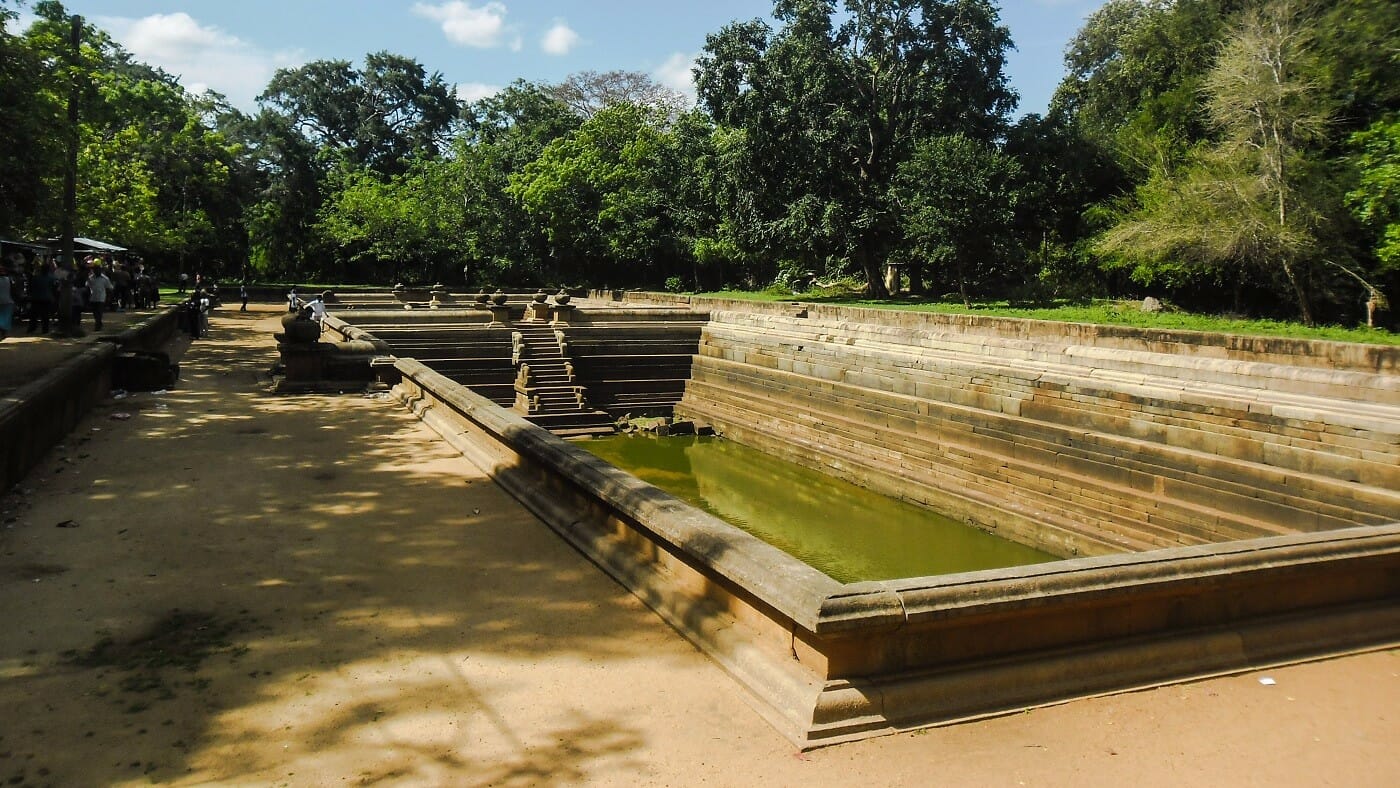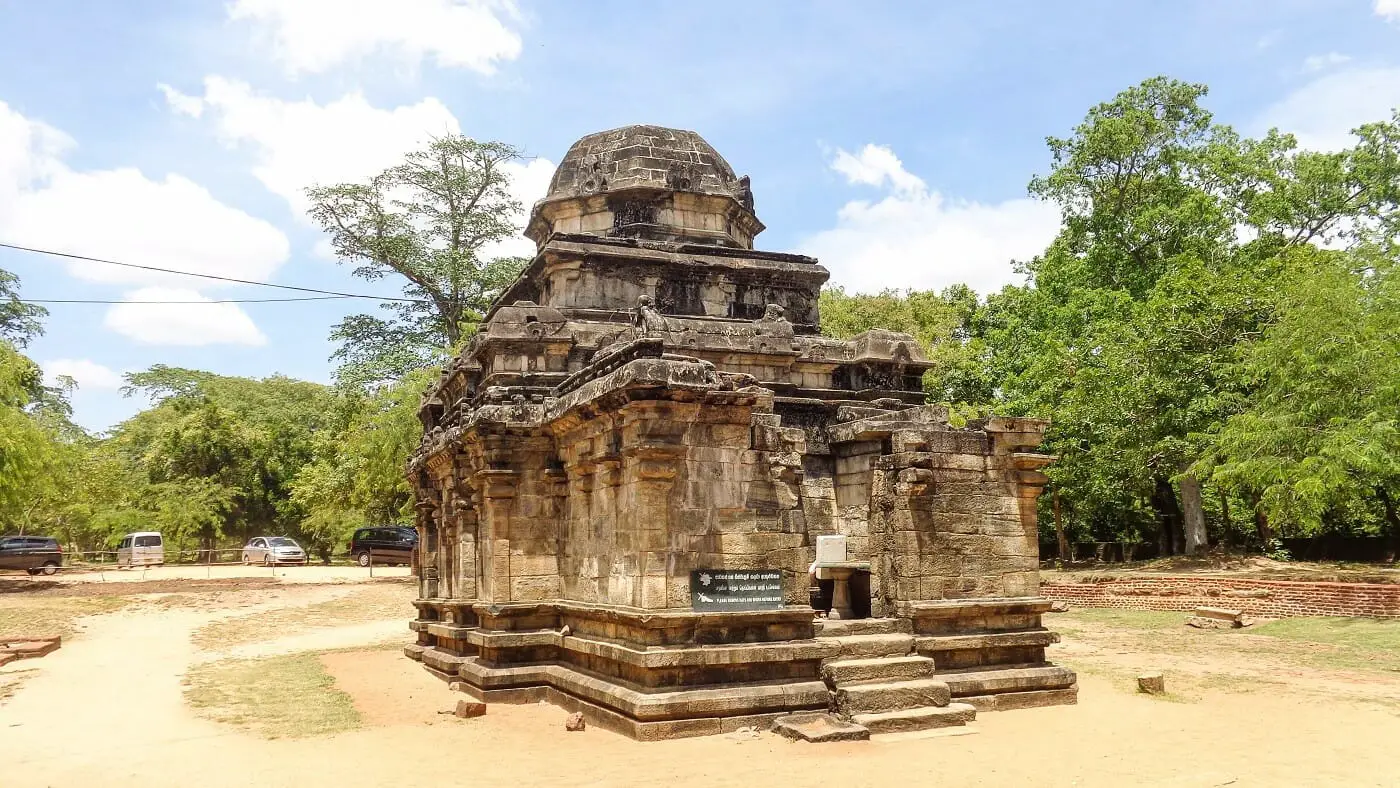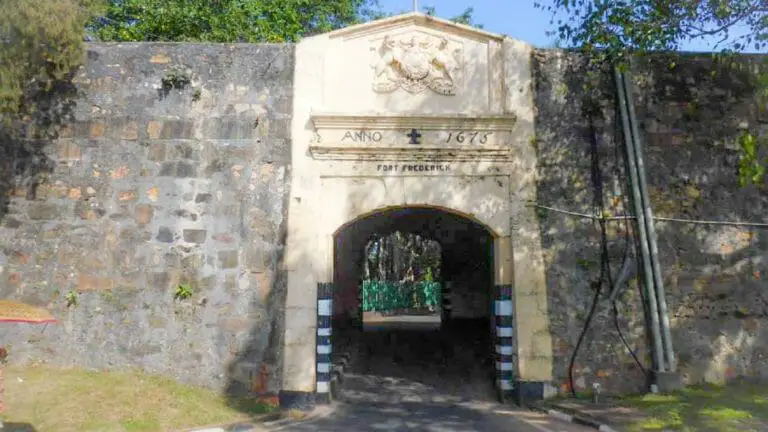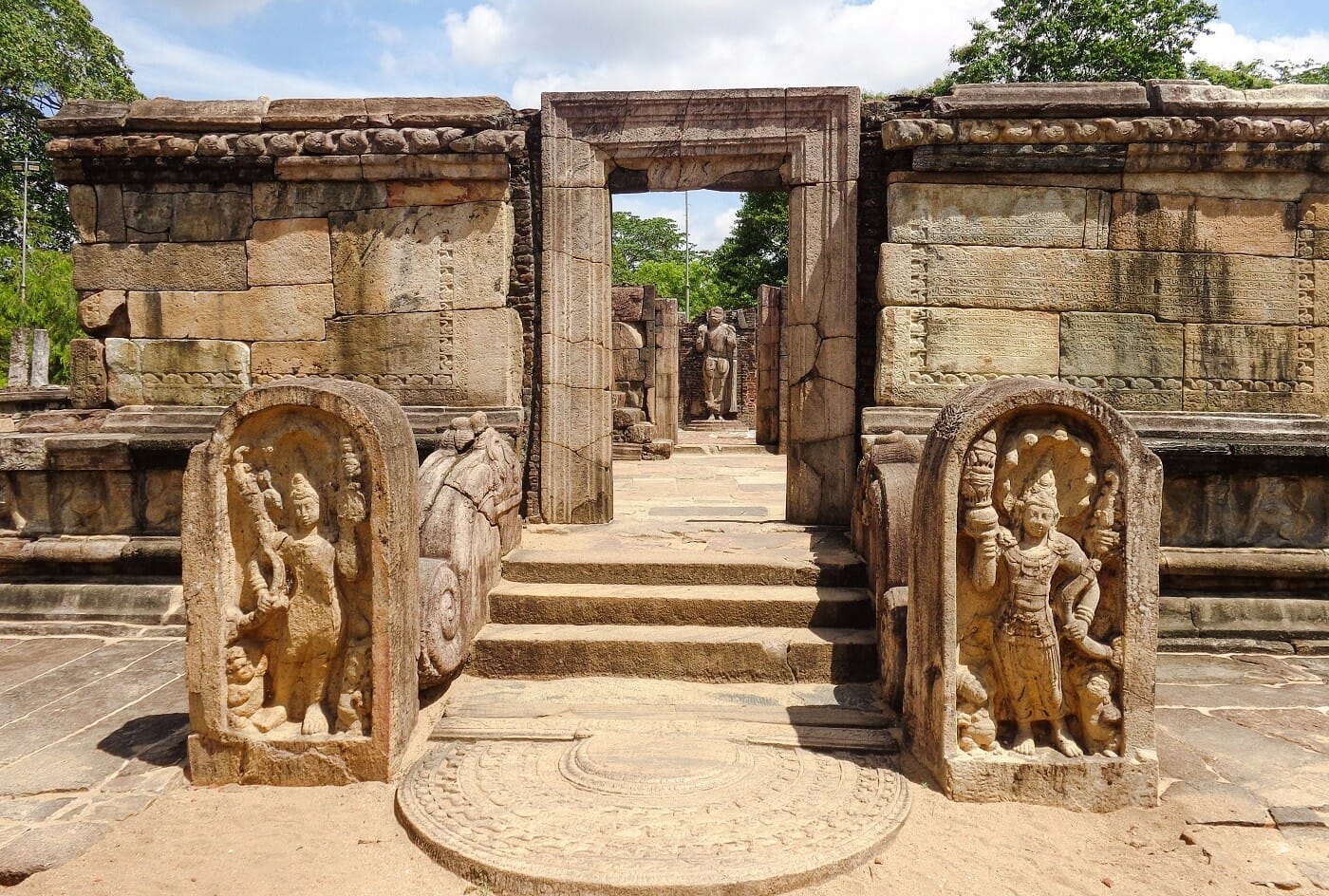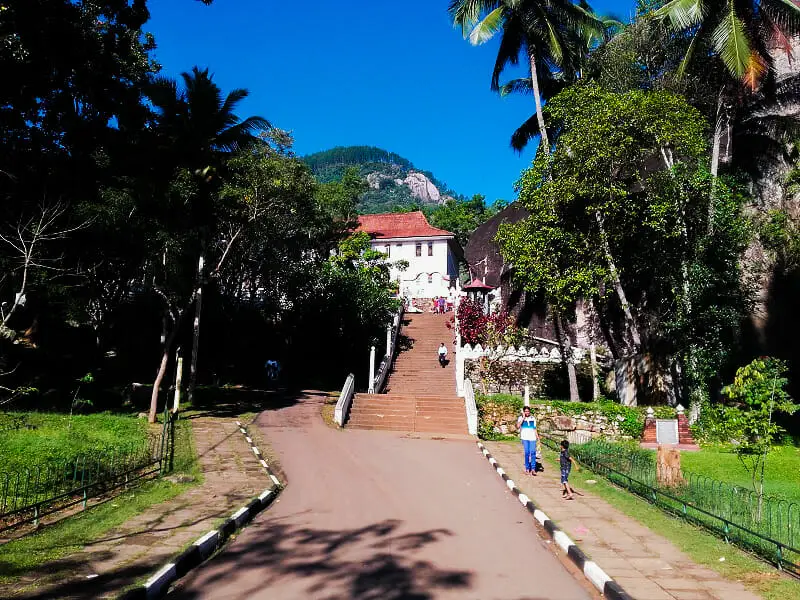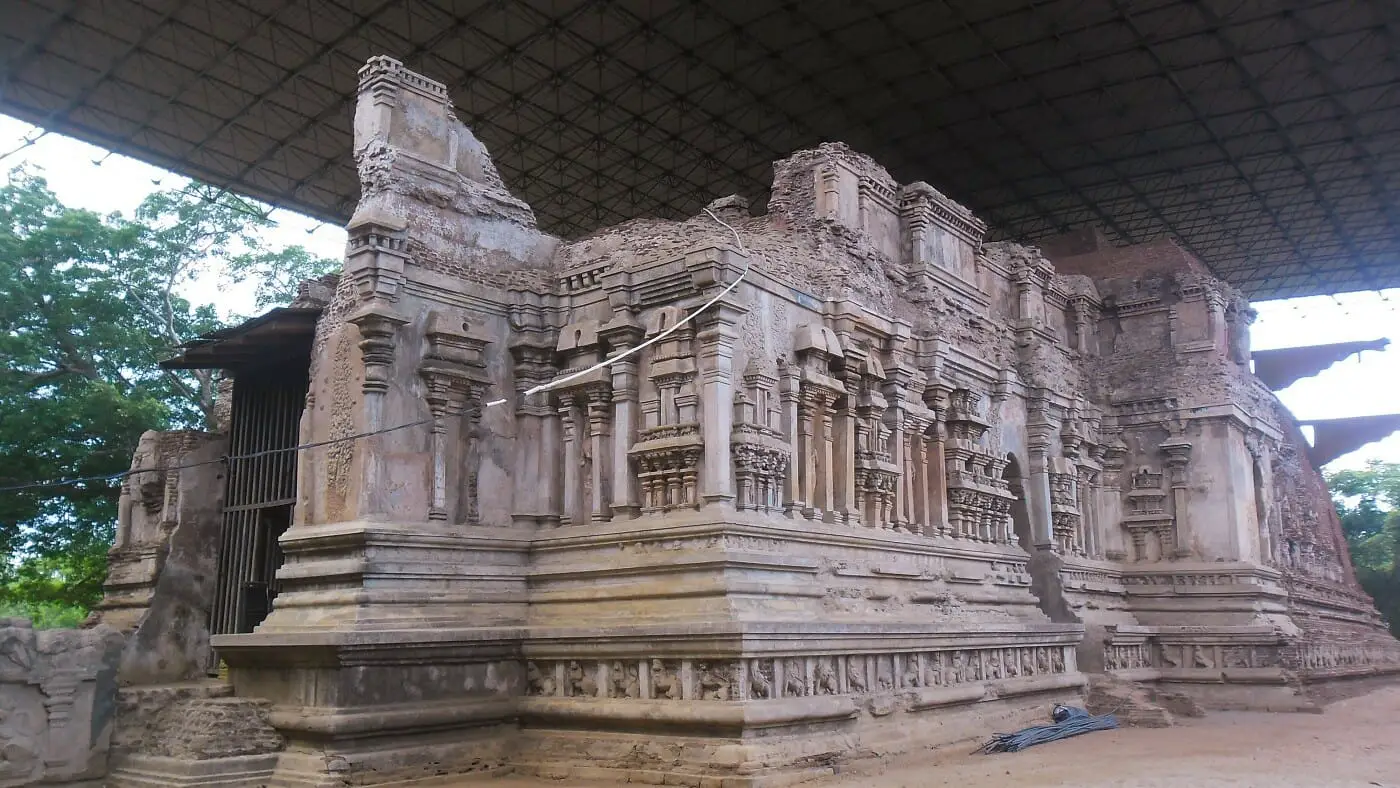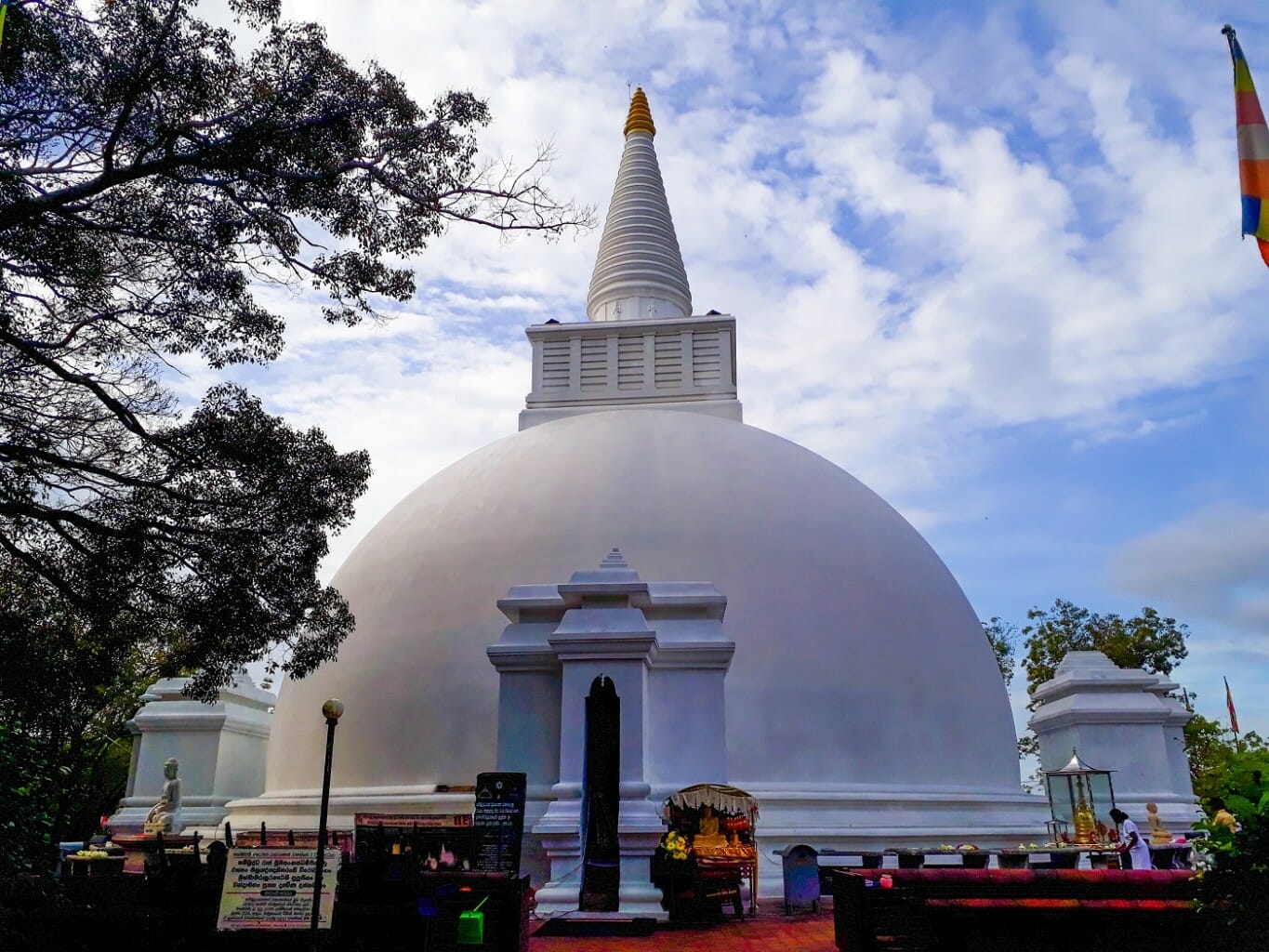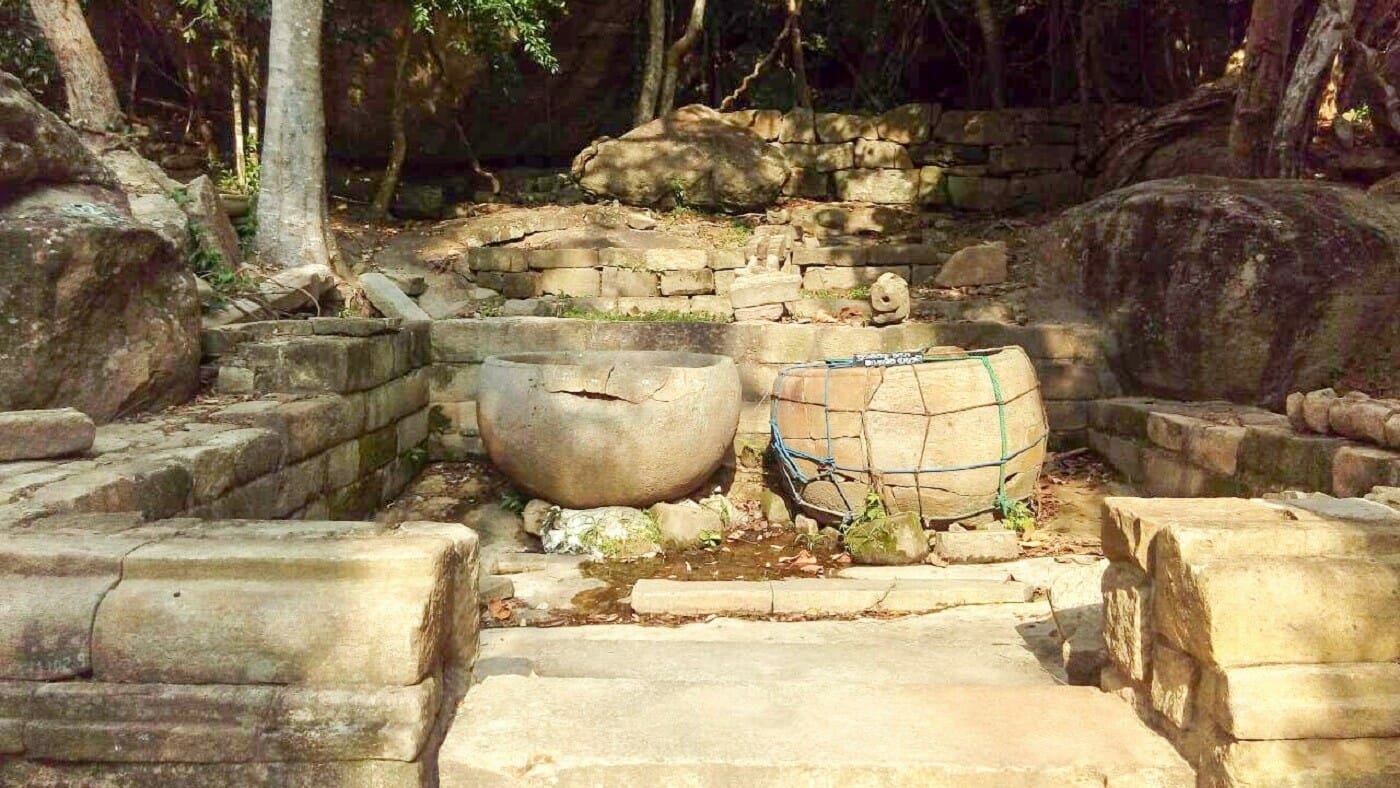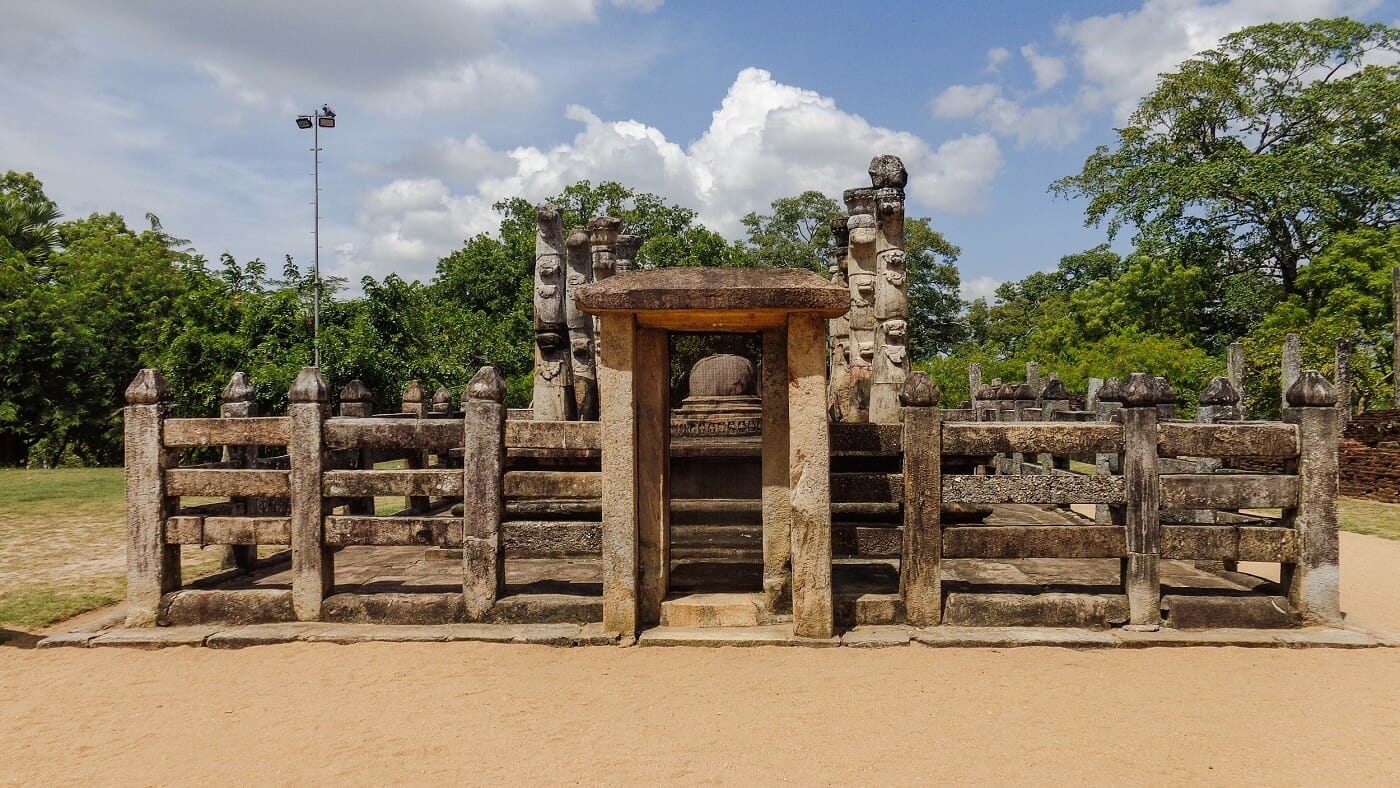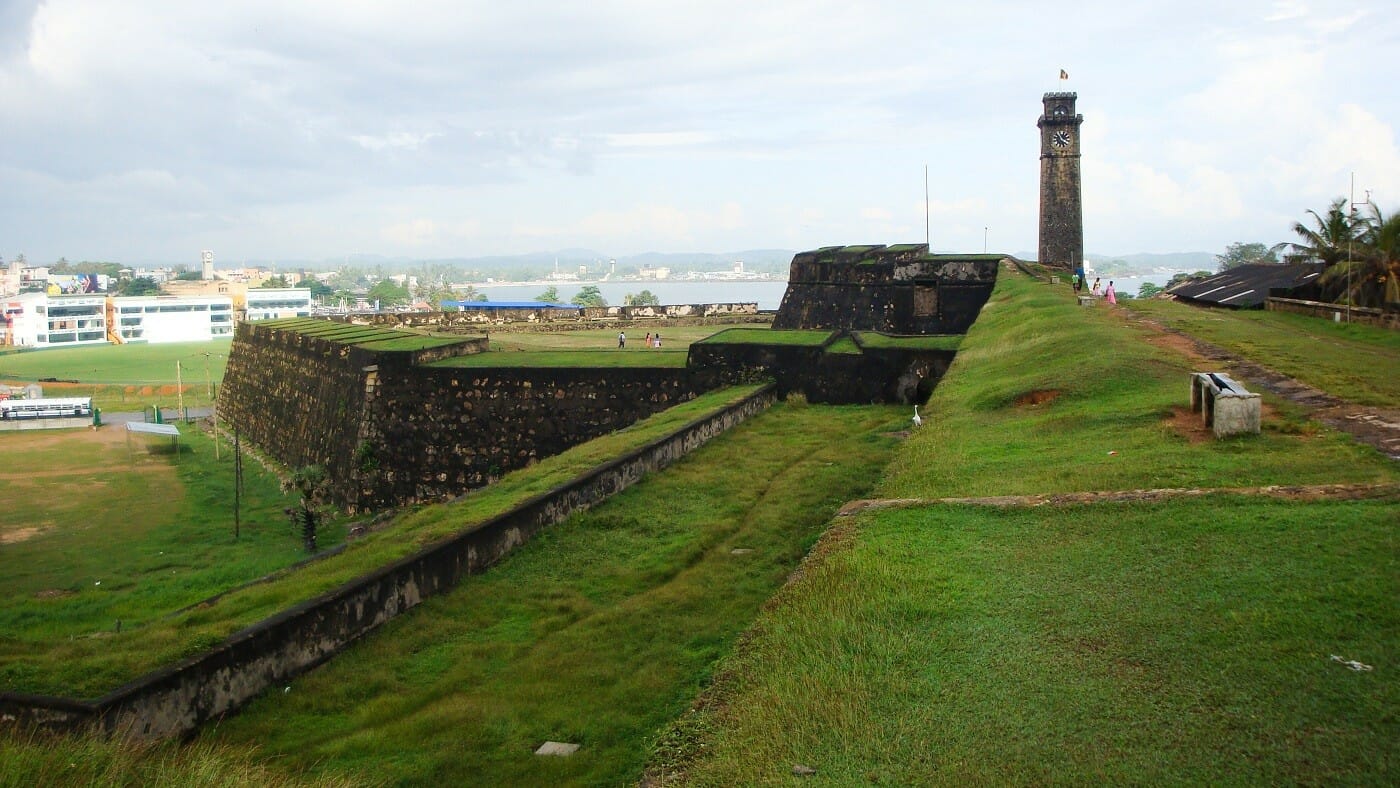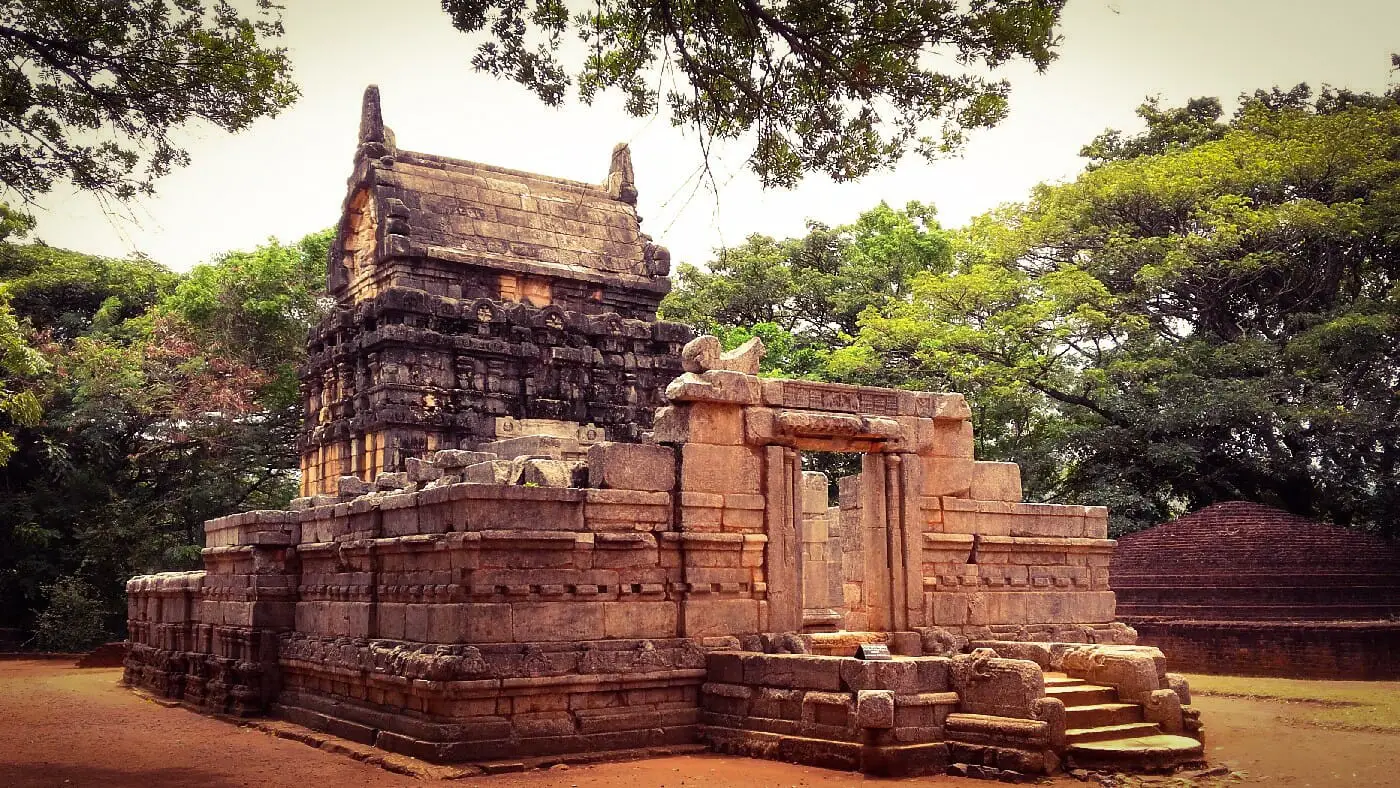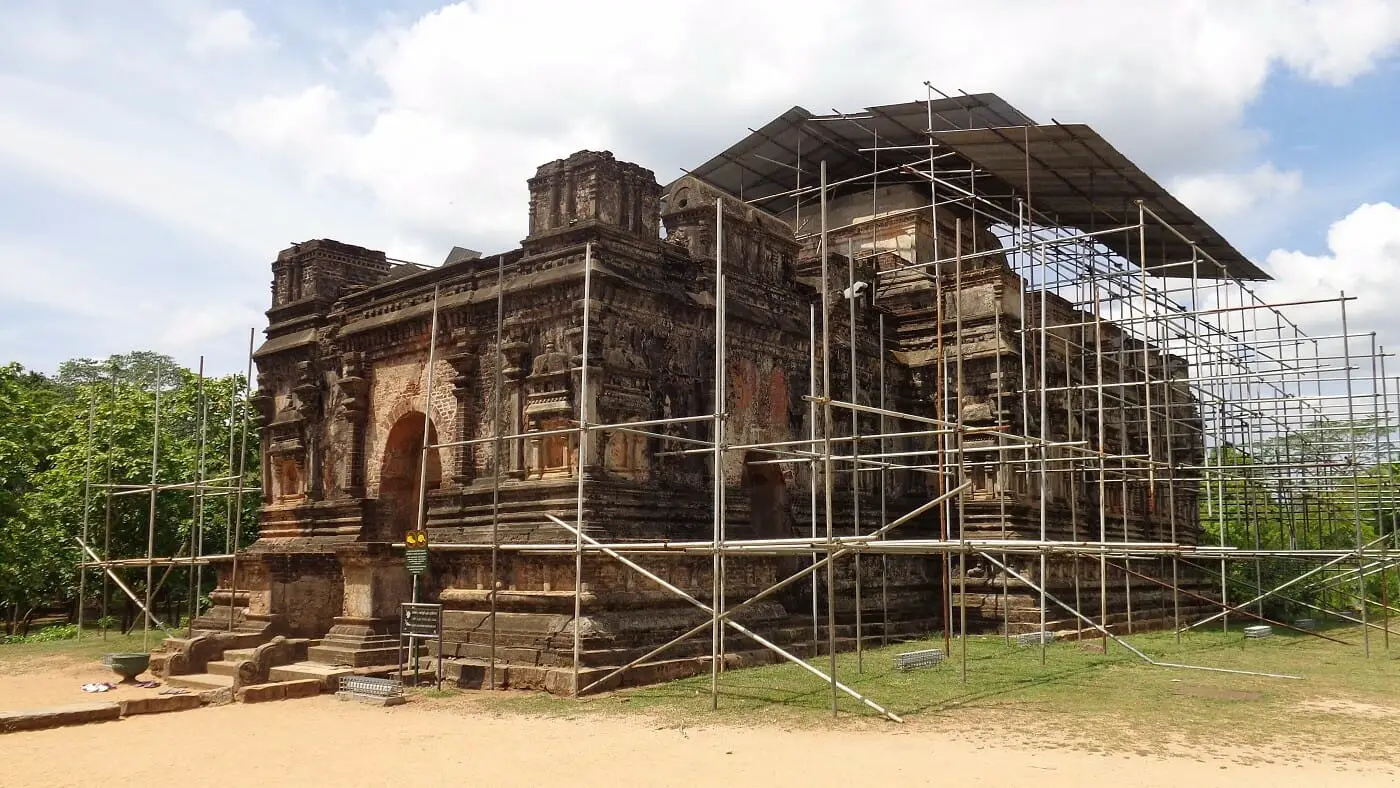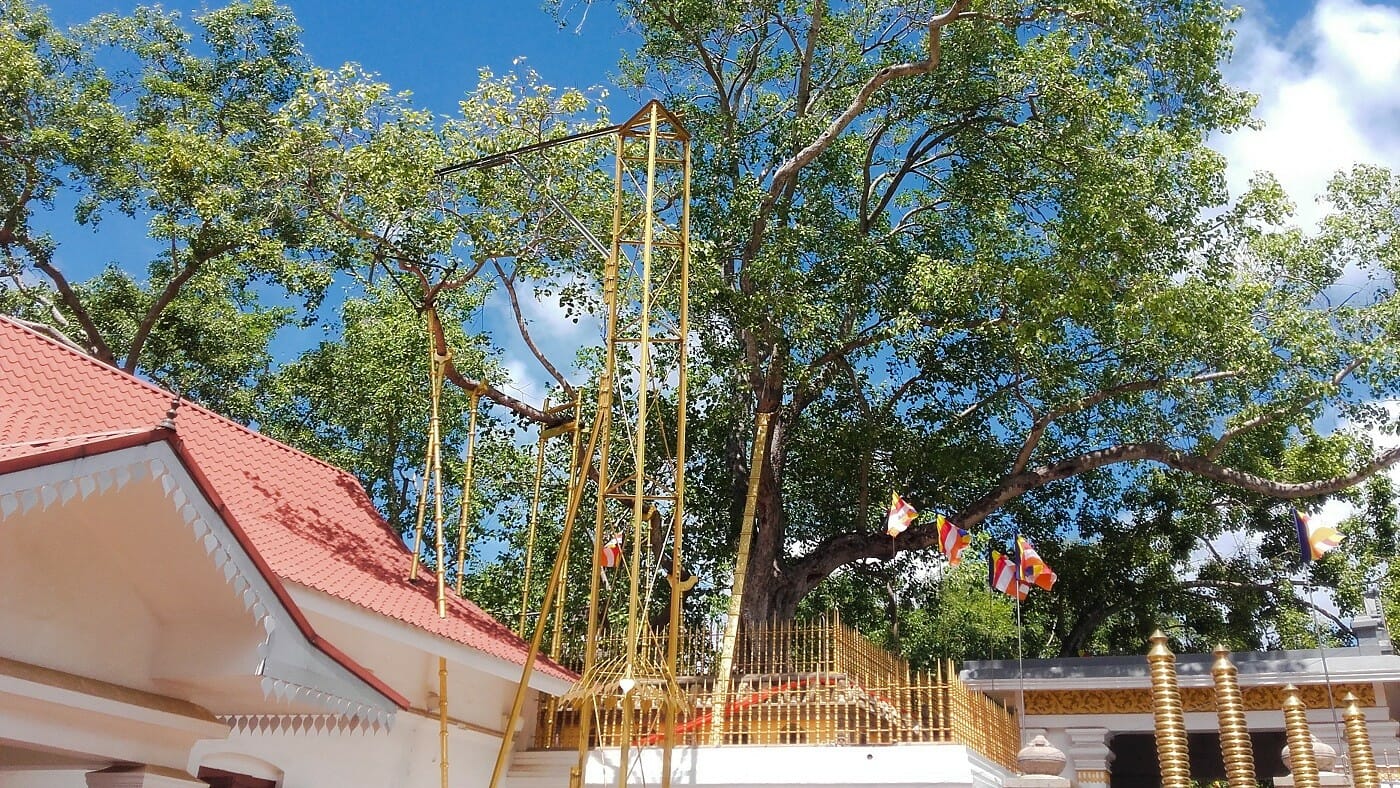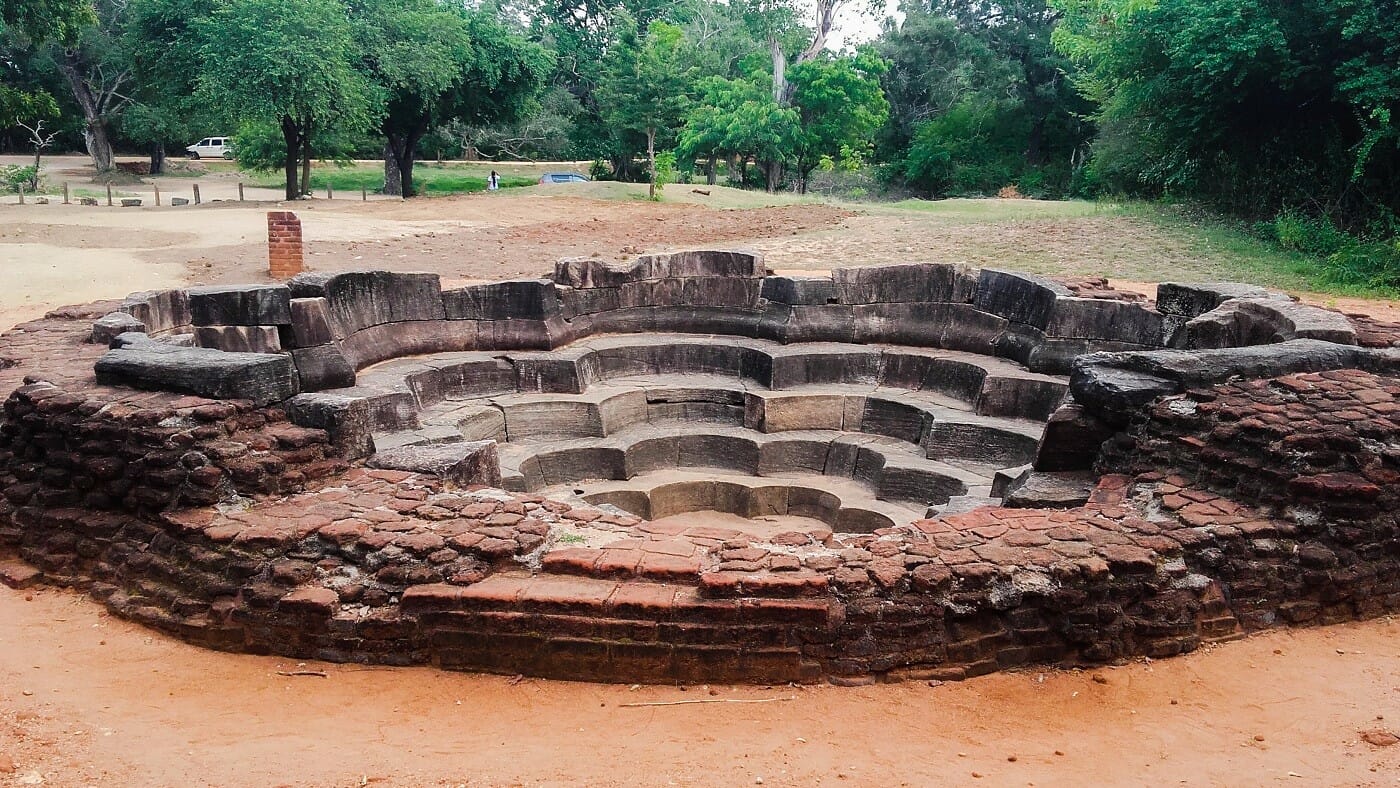If you are a historical traveler, Sri Lanka is one of the best destination for you. Sri Lanka has many amazing historical sites. Among them, Anuradhapura and Polonnaruwa are the main tourist attractions.
Favorite
Baddhasima Prasadaya is the Pohoyageya or Uposathagharaya (Chapter House) of the monks of Alahana Piriwena where they rehearsed the codes of discipline (Especially the pati mokka). It is located in Polonnaruwa District of North Central Province, Sri Lanka. The remaining pillars and brick walls suggest that there had been a multi-storied building and according to the Mahavamsa, there had been a twelve storied building. As such, this may be the largest of the Uposathaghara in the Island. The central Platform of the building was to locate the relic casket while four monks seated on the stone pedestal facing the cardinal directions read the code of Read more...
Favorite
Mahiyangana Rajamaha Viharaya is an ancient Buddhist temple located in Badulla District of Uva Province, Sri Lanka. it is one of the Solosmasthana (16 most sacred places to be worshiped by Buddhist in Sri Lanka), and it is believed to be the place where the Lord Buddha’s first visit to the country. According to the historical sources, Buddha visited this place in the ninth month after he attained enlightenment. External Links වසර 2600කට පෙර බුදුන් වැඩිය මියුගුණ පුදබිම Read more...
Favorite
This monastic hospital is located in the Alahana Piriwena premises of the main archaeological site in Polonnaruwa District of North Central Province, Sri Lanka. The archaeological excavations have confirmed this building as a monastic hospital constructed in the 12th century. A medicine trough (Behet Oruva)made of stone is still can be seen in one room. This medicine trough had been used for treating patients by immersing in herbal oil. Several surgical and medical instruments also have been discovered during the excavations at this site. There are two main sections in this building namely living and treatment sections. Both sections have open courts Read more...
Favorite
Velaikkara Inscription is an ancient inscription carved on a stone located in the Dalada Maluwa premises of main archaeological site in Polonnaruwa District of North Central Province, Sri Lanka. The Velaikkaras rebelled against King Vijayabahu (1055 – 1110 A.D.) in his 30th year refusing to fight against the Colas and they were punished. It seems that Velaikkaras provided protection to the Temple of Tooth even during the early period of Viajayabahu due to the mention of construction of some building by them around the Temple of Tooth. Perhaps after the rebellion, they were removed beings the guards of the Temple of Read more...
Favorite
The Girihandu Seya stupa is located in Thiriyaya in Trincomalee District of Eastern Province, Sri Lanka. According to the legend, this is the stupa mentioned in the story of Thapassu and Bhalluka two traders. As such, it is considered to be the first Stupa built by enshrining the relic of Lord Buddha and probably it was built around 528 B.C. The stupa was originally a small in size and had been renovated in the 8th century A.D. The Vatadage encircling stupa was built during the renovation. External Links Thiriyaya Girihandu Seya Thiriyaya – Department of Archaeology Read more...
Favorite
Sigiriya is one of the best preserved examples which depict the engineering skills of ancient era of Sri Lanka. It is located in Matale district of Central Province, Sri Lanka. Today Sigiriya is one of the UNESCO listed World Heritage Site of Sri Lanka. Sigiri Wall Paintings Mirror Wall (Kadapath Paura) Sinha Padaya Sigiriya Rock External Links SigiriyaTourism.com World Heritage Sites of Sri Lanka Read more...
Favorite
Pothgul Vehera is located in the Polonnaruwa District of North Central Province, Sri Lanka. The Sinhalese name “Pothgull” has the meaning of “place to store books”. As such, with the other historical evidence, this ancient place has been identified as the oldest Buddhist library complex in the country. It was built by the King Parakramabahu the Great (1153-1186). Click here to find a list of accommodations around Polonnaruwa, Sri Lanka on Booking.com Read more...
Favorite
Ranmasu uyana is pleasure garden of the ancient royals of Sri Lanka. It is located in between Thissa Wewa and Isurumuniya temple in Anuradhapura district of North Central Province. The garden is spreaded over 40 acres. This is a good example of ancient Sri Lankan garden architecture. Establishment of this “Ran Masu Uyana” has been carried out to full fill the essential necessity of a royal park and this was built on the right side of the Maha Vihara premises. Inscription of Vessagiriya, established by King Mihindu IV in the 10th century A.D., has identified this as the “Ranmasu Uyana”. Meaning Read more...
Favorite
Pidurangala Rajamaha Viharaya is an ancient Buddhist monastery located in the Matale District of Central Province, Sri Lanka. The monastery was built by the King Kashyapa (473-495 CE) to relocate monks who were residing in Sigiriya rock before the construction of the fortress. Also, it is believed that this monastery has been served as the royal monastery during the reign of King Kashyapa. Pidurangala is a massive rock similar to Sigiriya, said to be just four feet short of the height of Sigiriya. From certain places at a distance, one can see the view of both Sigiriya and Pidurangala. Surrounding the Pidurangala Read more...
Favorite
“Kuttam Pokuna” or “Twin Ponds” is a unique creation of ancient architecture and considered as one of the significant achievements in hydrological engineering in ancient Sri Lanka. The pond is located in the Sacred City of Anuradhapura in North Central Province, Sri Lanka. As the name suggests, there are two ponds in this creation. It has been identified that these ponds were used to collect water for the Abhayagiri Vihara monks to bath. The two ponds are not identical and also one seems to be older than the other. The width of the ponds is the same and it is Read more...
Favorite
This Siva Devalaya is the oldest Hindu shrine found in the Ancient City of Polonnaruwa, Sri Lanka. It was built by king Raja Raja I (985 – 1014 A.D.). According to an inscription found, this place has been dedicated to the consort of the King. Read more...
Favorite
The Fort Frederick is a fort built in 1624 CE by Portuguese as a military encampment at Trincomalee District in Eastern Province, Sri Lanka. It was built from the debris of the famous ancient Hindu Koneswaram temple that was destroyed by the Portuguese. It has been an important military site for centuries. In 1665 the fort was rebuilt by the Dutch and again it was taken over by the British in 1795. Although the Fort Frederick is used today by the Sri Lankan military you are allowed to explore some parts of it. The Gokanna Temple and the rebuilt Koneswaram Read more...
Favorite
Hatadage is an ancient shrine in the Polonnaruwa District of North Central Province, Sri Lanka. It was built by the King Nissanka Malla (1187-1196 A.D.). This had been used to place the sacred tooth relic of Lord Buddha. According to historical sources, the shrine has built in sixty hours. The English translation of the Sinhalese word “Hata” is sixty, represent the duration of the construction period and the word “Dage” has the meaning of “relic shrine”. The remaining features of the building for today, evidence that the shrine was originally a two-story building. The shrine is 120 ft in length Read more...
Favorite
Aluvihara Rock Cave Temple (also called Matale Aluviharaya) is located in Matale district, Central Province of Sri Lanka. It is a Buddhist temple which history dates back to 3rd Century B.C to the reign of King Devanampiyatissa. The temple is the place where Tripitakas, namely Vinaya Pitakaya (Basket of Discipline), Sutta Pitakaya (Basket of Discourse) and Abhidarma Pitakaya (Basket of Metaphysics) wrote in Ola leaves during the reign of King Walagamba. The Museum This slideshow requires JavaScript. Balumge This slideshow requires JavaScript. Read more...
Favorite
Tivanka Image House is identified as the image house of Jetavanaramaya Monastery built by the King Parakramabahu the Great (1153 – 1186). It is located in the main archaeological site of Polonnaruwa District in North Central Province, Sri Lanka. The name Tivanka (means three bends) is given due to its giant Buddha image is bent at three places, namely shoulder, hip, and knee. The image house is famous due to the paintings on its interior walls. The paintings belong to the 12th century and they depict certain incidents from Jataka Stories and the life of Buddha. Like Thuparamaya and Lankathilaka, this image Read more...
Favorite
The Somawathiya Stupa is said to be enshrined the right tooth relic of Lord Buddha. It is located in Somawathiya Rajamaha Vihara premises in Polonnaruwa District of North Central Province. The area in which the temple located belongs to the Somawathiya National Park as well. The stupa was built during the reign of the King Kavanthissa (205–161 BC ) and it was named after his sister called princes Somawathi. Enter your current location in the search box below the map to find the best route to the Somawathiya Stupa. Click here to find a list of accommodations around Polonnaruwa, Sri Lanka. External Read more...
Favorite
The Rajagala Monastery is a sacred site in which history dates back to the Advent of Arhath Mahinda Thera. This place is in the Uhana area of the Ampara District in Eastern Province, Sri Lanka. The archaeological excavation is still underway and it is one of the largest archaeological sites in Sri Lanka with 1025 acres. The rock inscription found here regarding the Arhat Mahinda Thera is the most valued inscription of archaeological interest. According to the archaeological discoveries, the area had been inhabited from the prehistoric times. You can read more about this site from the external links given below. Read more...
Favorite
According to the inscriptions found, this pillared structure has identified as the Nissanka Latha Mandapaya. It is located in the place known as Dalada Maluwa in Polonnaruwa District of North Central Province, Sri Lanka. This building was constructed by the King Nissankamalla (1187-1196 A.D.). According to an inscription, this is the place where the King Nissankamalla listened to Pirith Chanting (a recitation or chanting of the word of the Lord Buddha). The building is surrounded by a stone railing and the entrance is also protected by a stone doorway. The stone pillars in this building are a unique design. These pillars are Read more...
Favorite
The Galle Fort, also known as Dutch Fort, located in the Bay of Galle on the southwest coast of Sri Lanka. It was first built by the Portuguese in 1588 and then by the Dutch during the 17th century from 1649 onward. UNESCO has inscribed this site as a cultural heritage. External Links UNESCO World Heritage Sites of Sri Lanka Read more...
Favorite
Eth Pokuna or Elephant Pond is a huge man-made ancient pond located in the Sacred City of Anuradhapura District in North Central Province. It is 52.7 m in width and 159 m in length. The depth of the pond is about 9.5 m. Supplying of water to the pond has been done by underground channels from the Periyakulam Tank. These water-supplying channels are still in working condition even after hundreds of years. The pond is surrounded by a number of ruins belongs to the Abhayagiri Monastery. Therefore this pond also may be built for the use of monks belongs to Read more...
Favorite
Nalanda Gedige is a building completely built with stone located in Matale District of Central Province Sri Lanka. The building was estimated to have been constructed between the 8th & 10th centuries and has the influence of the Pallava architecture. The building has designed like a Hindu temple. However, the building said to have been used as a temple by Buddhists. The building has richly decorated with stone carvings. Front View Rear View Pavilion Entrance Rock Carvings at Nalanda Gedige This slideshow requires JavaScript. Read more...
Favorite
This image house is located in the Dalada Maluwa premises in Polonnaruwa District of North Central Province, Sri Lanka. Although it is known as Thuparama Image House, the ancient name or the builder is not known. The image house is categorized as Gedige type as its walls and the roof is completely built with bricks. This is the only monument among those in Polonnaruwa where the roof is well preserved. A large seat thought to be the base of a giant seated Buddha statue can be seen inside the image house. The ornamentation of the exterior walls shows the influence of the Read more...
Favorite
Jaya Sri Maha Bodhi is a Sacred Bo-Tree in the Mahamewna Gardens, Anuradhapura District, North Central Province of Sri Lanka. It is said to be the southern branch of the historical Sri Maha Bodhi at Buddha Gaya in India under which Lord Buddha attained Enlightenment. Jaya Sri Maha Bodhi was brought to Sri Lanka by the Theri Sangamitta, daughter of Emperor Asoka, and was planted in the Mahamewna Gardens in Anuradhapura in 288 BC by King Devanampiyatissa. Jaya Sri Maha Bodhi is the oldest living human-planted tree in the world with known planting date. Today it is one of the Read more...
Favorite
Nelum Pokuna (Lotus Pond) is an ancient pond with a unique design made by ancient Sri Lankan architects. It is located in the ancient city of Polonnaruwa in North Central Province, Sri Lanka. The pond got its name because of its design which looks like a bloomed lotus flower. This pond is somewhat small compared to the other ponds found in the ancient city of Polonnaruwa and it is built with stones. The structural design of the Nelum Pokuna Theatre also has been inspired by this Lotus Pond. This pond is unnoticed by many of the visitors since it is located somewhat away Read more...
